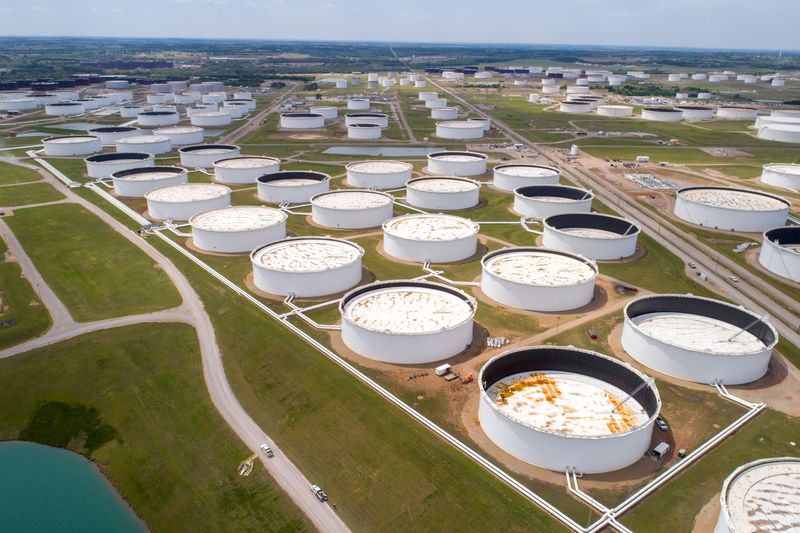Commodities
Oil plunges 4% as Iran supply disruption concerns ease, demand outlook weakens

LONDON (Reuters) – Oil prices tumbled more than 4% to a near two-week low on Tuesday due to a weaker demand outlook and after a media report said Israel is willing to not strike Iranian oil targets, easing fears of a supply disruption.
futures fell $3.28, or 4.2%, to $74.18 a barrel at 1118 GMT. West Texas Intermediate futures lost $3.33, or 4.5%, hitting $70.50 a barrel. Both benchmarks had earlier fallen by $4, reaching their lowest since the beginning of October.
Both benchmarks had settled about 2% lower on Monday. They are down about $5 so far this week, nearly wiping out cumulative gains made after investors became concerned Israel could strike Iran’s oil facilities in retaliation for the latter’s Oct. 1 missile attack.
Israeli Prime Minister Benjamin Netanyahu told the U.S. that Israel is willing to strike Iranian military targets and not nuclear or oil ones, the Washington Post reported late on Monday.
Israel expanded its targets in its war against Hezbollah militants in Lebanon on Monday, killing at least 21 people in an airstrike in the north.
“Weakening demand has led to traders withdrawing the ‘war premium’ from prices,” said Priyanka Sachdeva, senior market analyst at Phillip Nova.
“However, geopolitics still continues to support oil at this level. Without geopolitics in the equation, oil would have tumbled even more, maybe even below $70 per barrel mark amid the current weakening demand narrative.”
Both the Organization of the Petroleum Exporting Countries and the International Energy Agency this week cut their forecasts for global oil demand growth in 2024, with China accounting for the bulk of the downgrades.

OPEC has projected a much stronger expansion of global demand for the year than the IEA. But its “run of lower adjustments is something of an admission of wishful thinking,” said John Evans at oil broker PVM.
China’s customs data showed that September oil imports fell from a year earlier, and the country’s economic growth is also likely to undershoot Beijing’s target for 2024, according to a Reuters poll.
Commodities
Oil prices rise; U.S. crude inventories plunge, Russia-Ukraine truce eyed
Commodities
India’s Reliance to stop buying Venezuelan oil over US tariffs, sources say
Commodities
Oil prices climb on Venezuela supply worries

 Forex3 years ago
Forex3 years agoForex Today: the dollar is gaining strength amid gloomy sentiment at the start of the Fed’s week

 Forex3 years ago
Forex3 years agoUnbiased review of Pocket Option broker

 Forex3 years ago
Forex3 years agoDollar to pound sterling exchange rate today: Pound plummeted to its lowest since 1985

 Forex3 years ago
Forex3 years agoHow is the Australian dollar doing today?

 Cryptocurrency3 years ago
Cryptocurrency3 years agoWhat happened in the crypto market – current events today

 World3 years ago
World3 years agoWhy are modern video games an art form?

 Commodities3 years ago
Commodities3 years agoCopper continues to fall in price on expectations of lower demand in China

 Economy3 years ago
Economy3 years agoCrude oil tankers double in price due to EU anti-Russian sanctions























